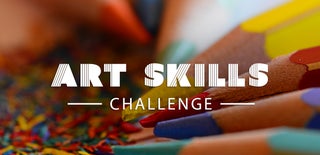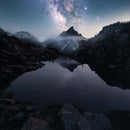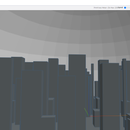Introduction: Painting Different Brightness Levels.
How do we perceive brightness??
To put it simply, "blacker" things are darker than "whiter" ones, but having a stroke of white doesn't necessarily put the "bright element" into your paintings. We are gonna solve just that...using water colors.
Our tactic here is going to be to leave the brightest regions unpainted, while painting progressively darker regions by overlapping layers of paint...and then use darker/lighter tones to create even more contrast.
Supplies
A paper.
Water colors.
Brushes.
Step 1: Draw.
Sketch something out.
Use light pencil strokes to do so.
I eventually settled for closed eyes.
Step 2: Paint.
Before anything, I wanted to show you guys how majestic water looks against light. The glowing region is water.
I painted the hair purple, notice the dark and light regions.
You can cover the sheet in water if you want to blot.
Step 3:
You can have just about any tone of a single color by mixing water to it in different proportions.
Use as many tones of a color as you like...remember, the lightest tones correspond to the lightest regions, and have the maximum amount of water, they are near transparent.
Merge tones of the same color using water.
The wet areas when looked over light will glow, but the glow would disappear as soon as the water dries out.
Step 4:
At this point, when the initial layer of paint has dried out, use darker(or lighter) tones of different colours to create even more contrast.
Step 5:
Work on finer details...use thinner brushes.
I'm not a huge fan of emulating reality, so I drew up a thin black border on the figure( avoid doing such things if your artwork is about recreating reality)...essentially, go with your style.
Step 6:
...And done. Notice how the painting looks under and over light, how the sharp contrast of the
"over-light" image translates into the gentle gradient of the "under-light" image.
The painting looks different against different colors of light,duh...but it's kinda cool.
Now, you can do the different tones without a light behind, but when you do have a light, a slight contrast looks like a deep contrast, that way you can work on subtle differences in paint.
Just to re-iterate, the light only helps you see subtle tones by showing them as deep tones.

Participated in the
Art Skills Challenge











